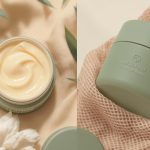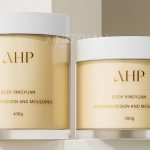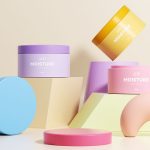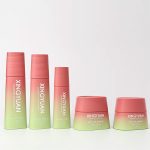Launching or scaling a cosmetic brand means walking a tightrope between cost and creativity. One of the biggest factors influencing both is MOQ, or Minimum Order Quantity.
MOQ determines how many packaging units you must order at once—and it directly impacts your cost per unit, cash flow, flexibility, and even sustainability strategy. For many brand owners, MOQ feels like a mystery number decided by the supplier. But in reality, it’s a pricing mechanism that can be managed, negotiated, and optimized.
MOQ directly affects cosmetic packaging costs because higher order volumes reduce the cost per unit through economies of scale. However, high MOQs require greater upfront spending and limit flexibility for smaller brands. Balancing MOQ with your packaging needs—by mixing stock and custom options or working with low-MOQ suppliers—can optimize both budget and brand design.
Now, let’s break down how MOQ works in the cosmetics industry, why it matters, and how you can use smart planning, negotiation, and supplier partnerships to make MOQ work for you—not against you.
Outline
- 1 What is MOQ in Cosmetics?
- 2 What is MOQ in Packaging?
- 3 How MOQ Affects Cosmetic Packaging Costs
- 4 Why Suppliers Set High MOQs
- 5 How Much Does Makeup Packaging Cost?
- 6 How to Negotiate a Lower MOQ with Packaging Suppliers
- 7 How to Reduce MOQ Without Raising Costs
- 8 Sustainable Cosmetic Packaging and MOQ
- 9 Custom Cosmetic Packaging: Balancing MOQ and Creativity
- 10 Does FDA Regulate Cosmetic Packaging?
- 11 Packaging Cost Breakdown for Cosmetics
- 12 MOQ Meaning in Manufacturing: Lessons from Other Industries
- 13 Global MOQ Trends in the Cosmetic Packaging Industry
- 14 Final Takeaways: Making MOQ Work for Your Brand
What is MOQ in Cosmetics?
In cosmetics, MOQ (Minimum Order Quantity) is the smallest number of packaging units a manufacturer is willing to produce or sell in a single production run.
For example, if a glass bottle supplier has an MOQ of 5,000 pieces, you must order at least 5,000 bottles—even if you only need 2,000. This threshold helps the supplier recover their setup costs, including mold creation, labor, and machine operation.
Common MOQ ranges in cosmetic packaging include:
- Plastic bottles and jars: 3,000–10,000 pcs
- Glass containers: 1,000–5,000 pcs
- Tubes: 5,000–20,000 pcs (depending on diameter and decoration)
- Paperboard boxes: 500–3,000 pcs
- Droppers and pumps: Often tied to bottle MOQ, around 3,000–5,000 pcs
Small batch beauty brands often find these numbers intimidating. But MOQs exist for good reason—they make production efficient, reduce waste, and keep per-unit prices manageable.
What is MOQ in Packaging?
From a manufacturing perspective, MOQ reflects the minimum production volume that makes a process cost-effective.
Packaging production involves multiple fixed costs that don’t change with quantity:
- Mold setup and tooling for plastic or metal parts
- Machine calibration for consistent thickness and color
- Printing plate setup for custom logos and finishes
- Material sourcing and waste management
If a supplier runs machines for a small batch, those fixed costs must still be covered. Hence, lower MOQs usually mean higher unit prices.
In contrast, large MOQs spread those costs across more units, bringing the per-piece price down dramatically. That’s why large brands can afford premium finishes while small ones struggle to get competitive pricing.
How MOQ Affects Cosmetic Packaging Costs
MOQ influences cost in two main ways:
- It changes the cost per unit.
- It changes your total cash outlay.
Let’s look at an example comparing two brands ordering the same glass jar:
| Brand Type | Quantity | Unit Cost | Total Cost |
| Startup | 1,000 pcs | $3.00 | $3,000 |
| Established | 10,000 pcs | $1.50 | $15,000 |
Even though the large brand spends more overall, their unit cost is 50% lower. This gives them a better profit margin and pricing flexibility.
But the small brand must tie up capital in inventory. If those jars don’t sell quickly, storage costs and cash flow strain follow. That’s why understanding MOQ early in your budgeting process is essential.
Why Suppliers Set High MOQs
Suppliers don’t impose MOQs just to be difficult—they’re protecting their production efficiency. Here are the main reasons:
- Material batch size: Raw materials (like resins or glass sand) come in bulk, so it’s inefficient to buy or melt small quantities.
- Machine calibration: Every color change or mold swap wastes time and material.
- Labor and energy costs: Machines must run for a minimum period to justify energy consumption.
- Printing alignment: Small batches make it harder to maintain color consistency.
Understanding these constraints can help you negotiate smarter, because you’ll know which factors are flexible and which are not.
How Much Does Makeup Packaging Cost?
Cosmetic packaging prices vary depending on material, design complexity, and quantity. On average:
- Plastic packaging: $0.30–$1.20 per unit
- Glass packaging: $0.80–$3.50 per unit
- Metal components: $1.00–$5.00 per unit
- Luxury packaging with custom mold and decoration: $5.00–$15.00+ per unit
Key cost drivers include:
- Material type: PET is cheaper than acrylic or glass.
- Decoration method: Hot stamping, UV coating, and metallization add 10–40% to cost.
- MOQ level: The smaller the batch, the higher the price per piece.
- Supplier location: Asian suppliers typically offer lower MOQs than European ones but may require longer lead times.
When budgeting, always add shipping, customs, and storage to get a realistic cost per product.
How to Negotiate a Lower MOQ with Packaging Suppliers
Yes, MOQs are negotiable—especially if you’re prepared and strategic.
Here are proven tactics to lower your MOQ without sacrificing quality:
- Start with stock packaging: Use ready-made molds and shapes from supplier catalogs. They usually come with MOQs as low as 100–500 units.
- Order mixed SKUs: Ask if the supplier can combine several product types in one production run (e.g., jars + bottles).
- Simplify decoration: Skip custom coloring or embossed logos at first. Stick with printing or labeling.
- Offer future commitment: Promise repeat orders to show long-term potential.
- Negotiate through packaging brokers: Some agencies consolidate small orders from multiple brands to reach supplier MOQs.
- Be flexible on timeline: If you can wait for a shared production window, suppliers are more open to low-volume orders.
💬 Example: A new skincare brand wanted only 2,000 frosted glass bottles. The supplier’s MOQ was 5,000. By accepting clear bottles and using printed labels instead of silk-screening, they reduced the MOQ to 1,500—cutting their upfront cost by 40%.
How to Reduce MOQ Without Raising Costs
Reducing MOQ is only half the battle—you also need to keep costs stable. Here’s how:
- Standardize packaging: Use one bottle shape for multiple products. This consolidates orders.
- Choose common colors: Transparent or white packaging is easier to batch-produce.
- Order regionally: Local manufacturers can offer smaller MOQs because of lower logistics risk.
- Plan inventory smartly: Align production with product launches and promotions to avoid overstock.
- Opt for hybrid solutions: Combine low-MOQ stock packaging with custom-designed labels or sleeves for branding flair.
Many successful indie brands follow a “grow-as-you-go” model—starting with small runs and reinvesting profits into larger, more customized orders later.
Sustainable Cosmetic Packaging and MOQ
Eco-friendly packaging is increasingly popular, but it introduces unique MOQ challenges.
Sustainable materials like PCR plastic, bamboo, and biodegradable paperboard are sourced differently and may require larger batch processing to ensure consistency. That’s why MOQ for sustainable options is often higher.
However, sustainability doesn’t have to break your budget:
- Ask suppliers for mixed-material packaging (e.g., PCR + virgin PET) to balance cost and green goals.
- Use recyclable labeling and caps to enhance your eco-image without raising MOQ.
- Explore local eco-packaging producers—they often work with lower volumes for niche brands.
Consumer surveys show that over 65% of beauty shoppers prefer sustainable packaging, even at slightly higher prices. So your eco investment can yield strong marketing returns.
Custom Cosmetic Packaging: Balancing MOQ and Creativity
Custom packaging is where brand identity shines—but also where MOQ spikes.
Each custom element—unique mold, color mix, or printing process—adds setup cost. Yet creative design doesn’t always require large orders.
Consider these smart custom options:
- Custom sleeves and stickers for stock packaging.
- Partial printing (logo only) instead of full-wrap artwork.
- Accent colors or matte coatings instead of complete recoloring.
- Limited-edition runs to test new aesthetics without committing to 10,000 units.
By thinking modularly—customizing outer boxes, caps, or labels—you keep flexibility high while maintaining consistent branding.
Does FDA Regulate Cosmetic Packaging?
Yes. In the United States, cosmetic packaging falls under the Federal Food, Drug, and Cosmetic Act (FFDCA).
The FDA doesn’t pre-approve designs, but it regulates:
- Material safety (no harmful leaching or contamination)
- Proper labeling (ingredients, usage, batch number)
- Misbranding prevention (accurate claims only)
For brands exporting to multiple regions, understanding both FDA and EU Cosmetic Regulation (EC 1223/2009) helps ensure compliance and avoids costly recalls.
Packaging Cost Breakdown for Cosmetics
Many brand owners underestimate the hidden costs tied to packaging. Here’s a full breakdown:
| Cost Element | Description | Typical % of Total |
| Material | Plastic, glass, paper, or metal | 40–60% |
| Decoration | Printing, coating, labeling | 10–20% |
| Molds & Setup | One-time tooling fees | 5–15% |
| Shipping & Duties | Freight, customs, insurance | 10–20% |
| Storage & Handling | Warehouse and damage | 5–10% |
MOQ impacts all these elements. Ordering too few units drives up per-piece cost, while ordering too many increases warehousing and risk. The goal is to find the “sweet spot” that aligns with your sales forecast and cash flow.
MOQ Meaning in Manufacturing: Lessons from Other Industries
The MOQ principle isn’t unique to cosmetics. It exists in fashion, food, and electronics manufacturing too.
In all industries:
- High MOQs enable bulk efficiency.
- Low MOQs support niche customization.
For example, apparel manufacturers often require 100–300 pieces per style. Coffee roasters need 500+ bags per blend. By studying how these industries manage MOQ—through co-packing, batch scheduling, and shared facilities—you can apply similar tactics in cosmetics.
Global MOQ Trends in the Cosmetic Packaging Industry
The global market is evolving toward more flexible MOQ models due to demand from indie beauty brands and e-commerce startups.
- China and South Korea: Offer highly competitive pricing but typically higher MOQs (5,000+ units).
- Europe (Italy, France): Smaller MOQs but higher per-unit prices, ideal for luxury packaging.
- North America: Growing number of local suppliers catering to low-MOQ sustainable packaging.
Many suppliers now advertise “Low MOQ Cosmetic Packaging” programs—offering as few as 100–500 pieces—to attract emerging brands. These programs use shared molds and simplified decoration to make low-volume production viable.
Final Takeaways: Making MOQ Work for Your Brand
Managing MOQ isn’t about fighting supplier limits—it’s about understanding the economics behind them.
Here’s your quick checklist:
✅ Start simple: Choose stock packaging for your first runs.
✅ Plan for growth: Gradually shift to custom packaging as demand stabilizes.
✅ Negotiate respectfully: Build relationships, not just transactions.
✅ Embrace sustainability: It enhances brand perception and long-term value.
✅ Track real costs: Include shipping, duties, and storage in your pricing model.
Understanding MOQ helps you make smarter packaging decisions, control costs, and scale your cosmetic brand sustainably. Whether negotiating better terms or mixing packaging types, mastering MOQ means achieving the perfect balance between budget, flexibility, and brand image.





